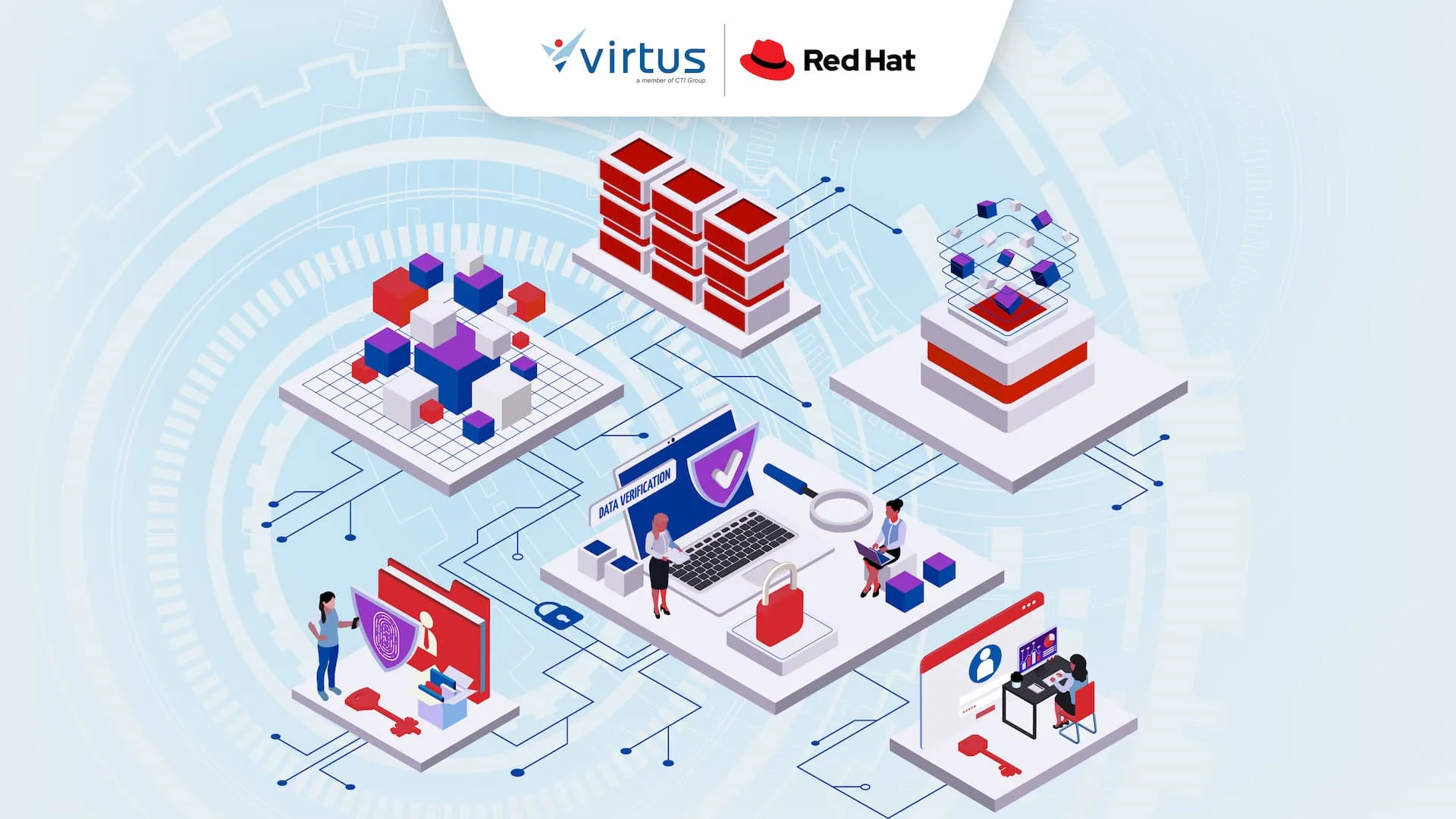Growing business demands for high availability, cost efficiency, and rapid migration have left no room for outdated infrastructures that are vulnerable to disruption. OpenShift Virtualization Engine was designed as a dedicated solution for Virtual Machine (VM) workloads, without unnecessary components, allowing organizations to focus their resources, enhance efficiency, and strengthen operational resilience.
According to Red Hat’s official datasheet, OpenShift Virtualization Engine support bare-metal architectures with up to 128 core per socket pair and is optimized for high-density workloads, highly relevant for industries that require top performance without excessive costs.
Virtualization Challenges in the Hybrid Cloud Era
In a hybrid cloud environment, the combination of on-premises and public cloud infrastructures introduces major operational and technical challenges. Complexity grows as workloads spread across multiple environments, visibility delines, and administrative overhead increases.
Security and data management have also become critical pain points. Hybrid infrastructures often face limited visibility, increased misconfiguration risks, and security gaps that can compromise entire virtualization environments if not managed properly.
Traditional virtualization platforms built for legacy data centers that are no longer agile or integrated for today’s hybrid demands, such as VM-to-cloud migration, VM and container consolidation, and cross-environment workload management. These limitations drive the need for a modern, adaptive virtualization platform that evolves with technology and business requirements.
Red Hat OpenShift Virtualization Engine: Unifying VMs and Containers on One Platform
To address these challenges, Red Hat OpenShift Virtualization Engine is introduced as a specialized edition designed for organizations that require an enterprise-class virtualization solution while remaining prepared for the future of containers and cloud-native environments.
This solution simplifies the management and scaling of VMs while keeping a clear path toward containerization when the organization is ready to transition. According to Red Hat’s documentation, the OpenShift Virtualization Engine minimizes unnecessary overhead and complexity, ensuring the enterprise-class scalability and reliability required for virtualization, migration, and high-density workloads. Companies can consolidate their virtualization investments and manage both VMs and future container workloads within the same OpenShift ecosystem.
Key Advantages of Red Hat OpenShift Virtualization Engine
Red Hat OpenShift Virtualization Engine empowers enterprises to modernize virtualization environments and seamlessly migrate to hybrid cloud architectures. Here are four major advantages:
Simplified VM Modernization
Migrate existing virtual workloads to a modern platform with minimal disruption while maintaining full performance and VM capabilities.
High Performance and Scalability
With large core support and near bare-metal performance, OpenShift Virtualization Engine is ideal for demanding workloads across finance, telecom, healthcare, mining, and manufacturing.
Cost Efficiency and Future Readiness
Centralized virtualization management through the OpenShift stack enables orchestration, monitoring, and automation via Ansible—reducing operational costs and complexity.
Clear Path to Modernization
While it focuses on VM management today, OpenShift Virtualization Engine provides a foundation for organizations to evolve toward containerization, hybrid cloud, and AI/ML workloads within the broader OpenShift ecosystem.
Key Features of Red Hat OpenShift Virtualization Engine
OpenShift Virtualization Engine delivers OpenShift’s core virtualization capabilities, streamlined to focus exclusively on VM workloads—excluding container-native or DevOps features. This approach ensures customers pay only for VM functionality without the overhead of additional components.
Console-Based Virtualization Management
A dedicated management console integrates with OpenShift administrative tools (Operators, Cluster APIs), enabling efficient VM administration.
High Availability for VM
Built-in node fencing, workload recovery, and failover mechanisms ensure VM resilience and uptime even during system failures.
Intelligent Resource Distribution
Using OpenShift’s scheduler, descheduler, and eviction policies, it balances resources dynamically and automatically reschedules workloads when nodes become constrained.
Storage Analytics and Management
Through the Container Storage Interface (CSI), administrators can create granular snapshots, clones, and monitor per-disk usage to optimize storage efficiency.
Flexible VM Networking
Leverages Open vSwitch (OVS) and Open Virtual Networking (OVN-Kubernetes) for both internal and external communication, with NMState Operator enabling dynamic configuration through labels and selectors.
Large-Scale Integration and Automation
Combine Ansible, GitOps, and Advanced Cluster Management to automate VM provisioning, lifecycle management, and daily operational tasks.
Business Benefits of Red Hat OpenShift Virtualization Engine
Red Hat OpenShift Virtualization Engine offers some benefits for business, such as.
Reduce Operational Risk
A stable VM platform helps avoid costly downtime—especially in critical industries like finance, manufacturing, and mining—while enabling seamless migration from legacy systems.
Cost Efficiency
By focusing solely on VM workloads, companies can maintain existing investments while preparing for future transitions to containers without double-spending.
IT Environment Consolidation
Manage both VMs and potential containers on a single platform—reducing silos, accelerating time-to-value, and increasing team productivity.
Enterprise-Grade Scalability and Performance
With high core support and near bare-metal performance, it’s ideal for high-density, latency-sensitive, or mission-critical workloads.
A Foundation to Modernization
Even though it’s VM-focused, the platform supports gradual transitions toward containerization, hybrid cloud, and AI/ML workloads—building a strong foundation for application modernization and automation.
Explore more RedHat products in Virtus here.
Virtus, Your Partner for Modern Infrastructure Transformation
Entrust your digital transformation journey to Virtus, a trusted partner in building modern, resilient, and future-ready infrastructure. With deep expertise in cloud, data centers, and cybersecurity, Virtus helps organizations shift from traditional systems to agile, scalable, and secure cloud-native environments.
As an official provider of Red Hat OpenShift Virtualization Engine, Virtus, part of CTI Group, empowers enterprises to modernize their virtualization systems, simplify workload management, and accelerate migration from legacy platforms—without compromising performance or security. Build faster, smarter, and more resilient operations by connecting with our team today.
Author: Ervina Anggraini – Content Writer CTI Group

